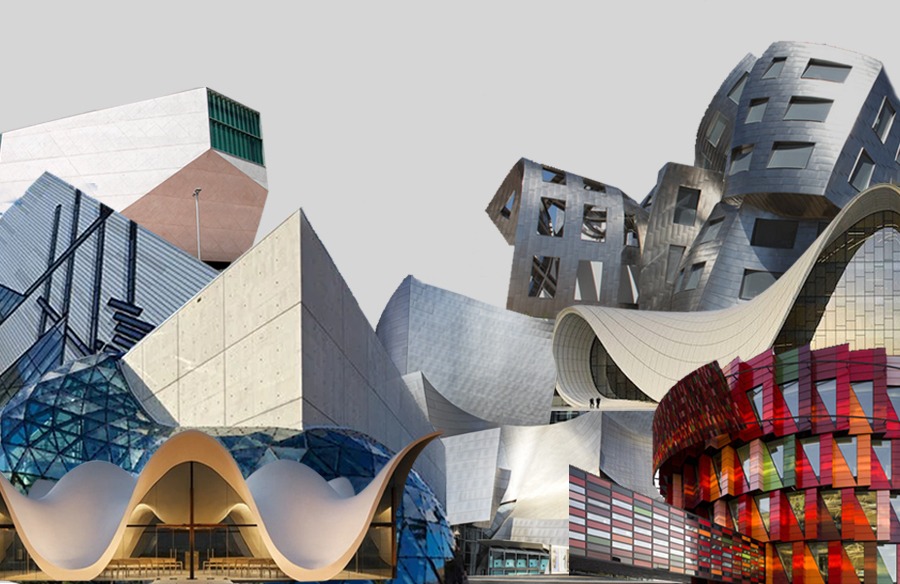The Role Of Technology In Contemporary Architecture And Design
In the world of architecture and design, technology has become an essential tool in creating innovative and sustainable structures that push the boundaries of creativity. From 3D modeling software to virtual reality simulations, architects and designers are leveraging the power of technology to enhance the design process and create more efficient and eco-friendly buildings.
As technology advances, so does the role it plays in architecture and design. With the ability to design and build structures faster, safer, and more sustainably, technology is transforming the way we approach the built environment. In this article, we will explore the various ways in which technology is being used in contemporary architecture and design, and its impact on the industry as a whole.
The Role of Technology in Contemporary Architecture and Design
Contemporary architecture has been transformed by technology. From advanced computer-aided design software to 3D printing, technology has allowed architects and designers to create innovative structures and designs that were previously impossible. In this article, we will discuss the vital role of technology in contemporary architecture and design.
Innovative Design
Thanks to technology, architects and designers can now create highly innovative designs, pushing the boundaries of what is possible. With computer-aided design (CAD) software, architects can create intricate designs that would have been impossible to create by hand. In addition, 3D printing has made it possible to create complex designs that were previously too difficult to construct. This technology enables architects and designers to create unique shapes and structures that were once impossible to produce.
One of the most significant benefits of technology in architecture is the ability to create sustainable buildings. Building information modeling (BIM) technology enables architects and engineers to create energy-efficient buildings, reducing energy consumption and environmental impact. With BIM software, architects and engineers can make more informed decisions about the design and construction of a building, ensuring that it is sustainable and energy-efficient.
Efficient Construction
Technology has also transformed construction processes, making them more efficient and cost-effective. With the use of robotics and automation, construction time can be greatly reduced, and the quality of work can be improved. Drones can also be used to survey construction sites, providing accurate measurements and data that can be used to improve safety and efficiency.
The use of prefabricated building components is another way that technology has improved the construction process. Prefabricated components can be manufactured off-site, reducing construction time and costs. This technology has been particularly useful in the construction of modular buildings and structures, where the use of prefabricated components has become standard practice.
Virtual Reality
Virtual reality (VR) is another technology that has transformed architecture and design. VR allows architects and designers to create immersive experiences, allowing clients to experience a building or space before it is even constructed. This technology has become increasingly popular in architecture and design, as it allows clients to make more informed decisions about the design and layout of a building.
One of the most significant benefits of VR technology is the ability to reduce the number of design changes during construction. By allowing clients to experience a building or space in virtual reality, architects and designers can make more informed decisions about the design and layout of a building, reducing the need for expensive design changes during construction.
Challenges and Opportunities
While technology has transformed architecture and design, it has also presented some challenges. One of the most significant challenges is the need for architects and designers to stay up-to-date with the latest technologies. With new technologies emerging all the time, it can be challenging to keep up with the latest developments.
Another challenge is the potential impact of technology on jobs in the architecture and design industry. As more tasks become automated, some jobs may become obsolete, requiring architects and designers to develop new skills to remain competitive.
However, these challenges also present opportunities. By staying up-to-date with the latest technologies, architects and designers can create innovative designs that will set them apart from their competitors. In addition, the use of technology can help architects and designers work more efficiently, reducing costs and improving the overall quality of their work.
Conclusion
In conclusion, technology has had a significant impact on contemporary architecture and design. From innovative design to efficient construction processes, technology has transformed the way architects and designers work. As new technologies continue to emerge, it is essential for architects and designers to stay up-to-date with the latest developments to remain competitive in the industry. By embracing technology, architects and designers can create innovative designs and work more efficiently, ultimately benefiting their clients and the environment.
Frequently Asked Questions
What is the impact of technology on contemporary architecture?
Technology has had a tremendous impact on contemporary architecture and design. It has allowed architects and designers to create buildings and structures that were once thought impossible. With the use of 3D modeling software, architects can now create highly detailed and complex designs that were not possible before. The use of technology has also allowed for more sustainable designs, with the incorporation of energy-efficient systems and materials.
However, technology has also raised concerns about the loss of craftsmanship and the overreliance on machines. It is important for architects and designers to strike a balance between the use of technology and traditional design methods to create innovative and sustainable structures.
How has technology influenced the construction process?
Technology has greatly influenced the construction process, making it faster, more efficient, and safer. The use of Building Information Modeling (BIM) allows architects and engineers to create detailed 3D models of buildings, which can be used to optimize the construction process. This technology allows for better coordination between different teams and reduces the risk of errors during construction.
In addition, the use of prefabrication and modular construction has become more prevalent, enabling faster and more efficient construction times. The use of drones and other technology has also made the construction process safer, as these tools can be used to inspect and monitor construction sites.
What are some of the challenges of incorporating technology into architecture?
One of the main challenges of incorporating technology into architecture is the cost. Technology can be expensive, and not all clients may be willing to invest in the latest technologies. In addition, there is a learning curve associated with new technologies, which can slow down the design process.
Another challenge is the potential for technology to become outdated quickly. Architects and designers need to be aware of the latest trends and technologies in order to remain competitive in the industry. However, it is important to strike a balance between using new technologies and maintaining traditional design practices.
How has technology influenced sustainability in architecture?
Technology has had a positive impact on sustainability in architecture. The use of energy-efficient systems and materials, such as solar panels and green roofs, has become more prevalent in contemporary architecture. Building Information Modeling (BIM) has also made it easier for architects and engineers to optimize buildings for energy efficiency.
In addition, technology has allowed for better monitoring and management of resources during construction and throughout the life of a building. This has led to the creation of more sustainable buildings that have a smaller impact on the environment.
What is the future of technology in architecture and design?
The future of technology in architecture and design is exciting and full of possibilities. Augmented reality and virtual reality technologies are likely to become more prevalent in the design process, allowing architects and designers to create immersive virtual environments. The use of artificial intelligence and machine learning may also become more prevalent, allowing for more personalized and efficient designs.
In addition, the use of 3D printing and other advanced fabrication techniques may change the way buildings are constructed. This technology has the potential to reduce waste and increase efficiency in the construction process. Overall, the future of technology in architecture and design is bright, with endless possibilities for innovation and creativity.
What Does an Architectural Technologist Do?
In conclusion, technology has revolutionized the architecture and design industry in countless ways. With the advent of computer-aided design software and 3D printing, architects and designers have been able to bring their wildest ideas to life. Furthermore, technology has made it possible to create structures that are more sustainable, energy-efficient, and environmentally friendly.
However, it is important to note that technology is not a replacement for creativity and human ingenuity. While technology can help architects and designers to streamline their workflow and produce more accurate designs, it is ultimately up to the individual to use their skills and creativity to create truly innovative and inspiring structures.
In the future, we can expect technology to continue to play a vital role in architecture and design, but it is also important to remember the importance of maintaining a balance between technology and creativity. By embracing both, we can create a world full of inspiring and sustainable structures that will stand the test of time.




Leave a Reply